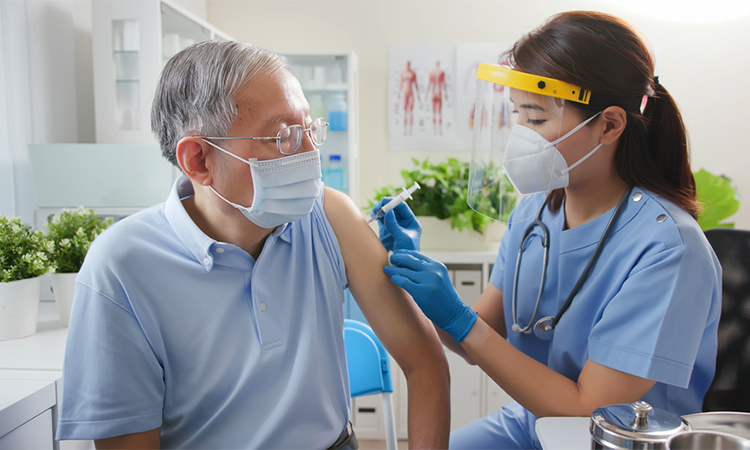Promising developments in quest to design pan-coronavirus vaccine
Posted: 28 July 2022 | Ria Kakkad (Drug Target Review) | 1 comment
Researchers have shown that a specific area of the SARS-CoV-2 spike protein is a promising target for a pan-coronavirus vaccine that could offer some protection against new virus variants, common colds, and help prepare for future pandemics.

Developing a vaccine that provides protection against several different coronaviruses is a challenge because this family of viruses have many key differences, frequently mutate, and generally induce incomplete protection against reinfection. Therefore, people can suffer repeatedly from common colds, and why it is possible to be infected multiple times with different variants of SARS-CoV-2. A pan-coronavirus vaccine would need to trigger antibodies that recognise and neutralise a range of coronaviruses, stopping the virus from entering hosts cells and replicating.
In their study, published in Science Translational Medicine, researchers at the Francis Crick Institute, UK, investigated whether antibodies that target the S2 subunit of SARS-CoV-2’s spike protein also neutralise other coronaviruses. This specific area of the spike protein tethers it to the virus membrane and allows the virus to fuse with the membrane of a host cell.
The researchers found that after vaccinating mice with SARS-CoV-2 S2, the mice created antibodies that were able to neutralise several other animal and human coronaviruses, including the seasonal ‘common cold’ coronavirus HCoV-OC43, the original strain of SARS-CoV-2, the D614G mutant that dominated in the first wave, Alpha, Beta, Delta, the original Omicron and two bat coronaviruses.
“The S2 area of the spike protein is a promising target for a potential pan-coronavirus vaccine because this area is much more similar across different coronaviruses than the S1 area. It is less subject to mutations, and so a vaccine targeted at this area should be more robust,” said Kevin Ng, a co-first author.
“The expectation for a vaccine that targets the S2 area is that it could offer some protection against all current, as well as future, coronaviruses. This differs from vaccines that target the more variable S1 area which, while effective against the matching variant they are designed against, are less able to target other variants or a broad range of coronaviruses.
“There’s a lot of research still to do as we continue to test S2 antibodies against different coronaviruses and look for the most appropriate route to design and test a potential vaccine,” said George Kassiotis, a corresponding author
The S2 area of the spike protein has, until recently, been overlooked as providing a basis for vaccination. This is because certain critical targets in the S2 area are only revealed after the virus has bound to a cell, a process mediated by the S1 area. As a result, there may be a narrower window of opportunity for S2 antibodies to neutralise the virus than for antibodies that target the S1 area.
“While a potential S2 vaccine would not stop people being infected, the idea is it would prime their immune system to respond to a future coronavirus infection. This would hopefully provide enough protection to survive an initial infection during which they could develop further immunity specific to that particular virus,” said Nikhil Faulkner, a co-first author.
The researchers will continue this work studying the potential of a pan-coronavirus that targets the S2 area of the spike protein and how it could be integrated with currently licenced vaccines.
Related topics
Antibodies, Drug Targets, Vaccine
Related conditions
Common cold, Covid-19
Related organisations
The Francis Crick Institute
Related people
George Kassiotis, Kevin Ng, Nikhil Faulkner








This will keep happening. “There’s not a lot of things I’m confident about in SARS-CoV-2 evolution, but I think I’m extremely confident we’ll keep seeing new variants that are progressively eroding antibody neutralization,” says Jesse Bloom, an evolutionary virologist at the Fred Hutchinson Cancer Center. Experts are cautiously optimistic that the pace of variant emergence will eventually slow, and for many people, reinfections are already milder and hospitals are not overwhelmed. But as the virus keeps changing, the only real guarantee is that it will be different—and that its changes won’t necessarily affect everyone uniformly.